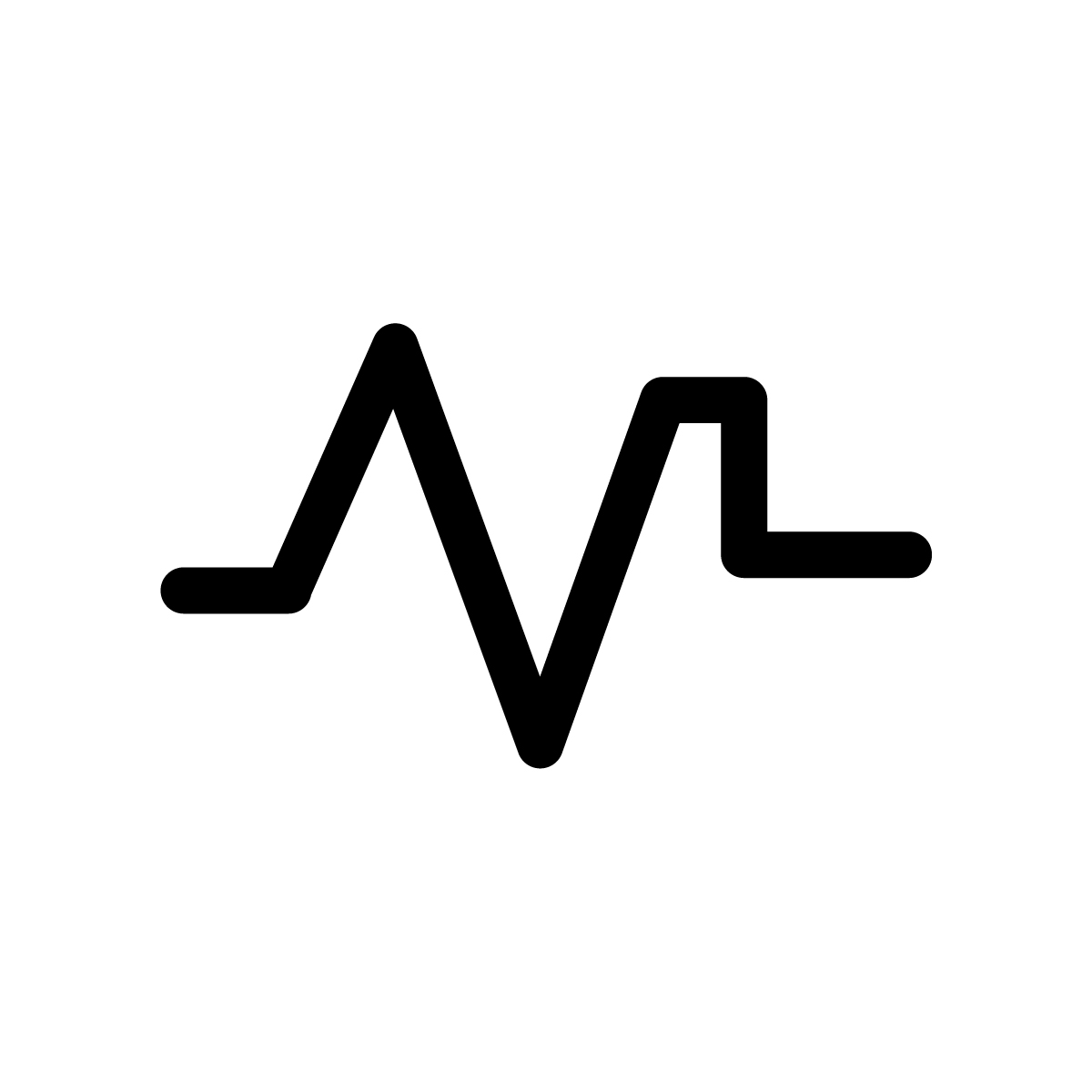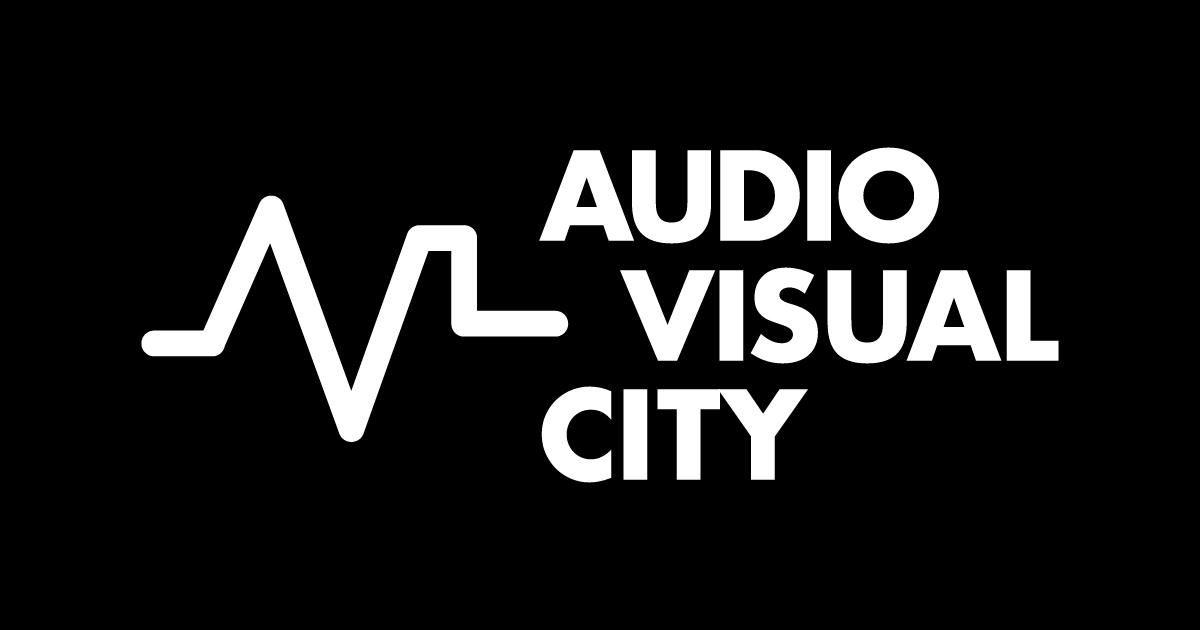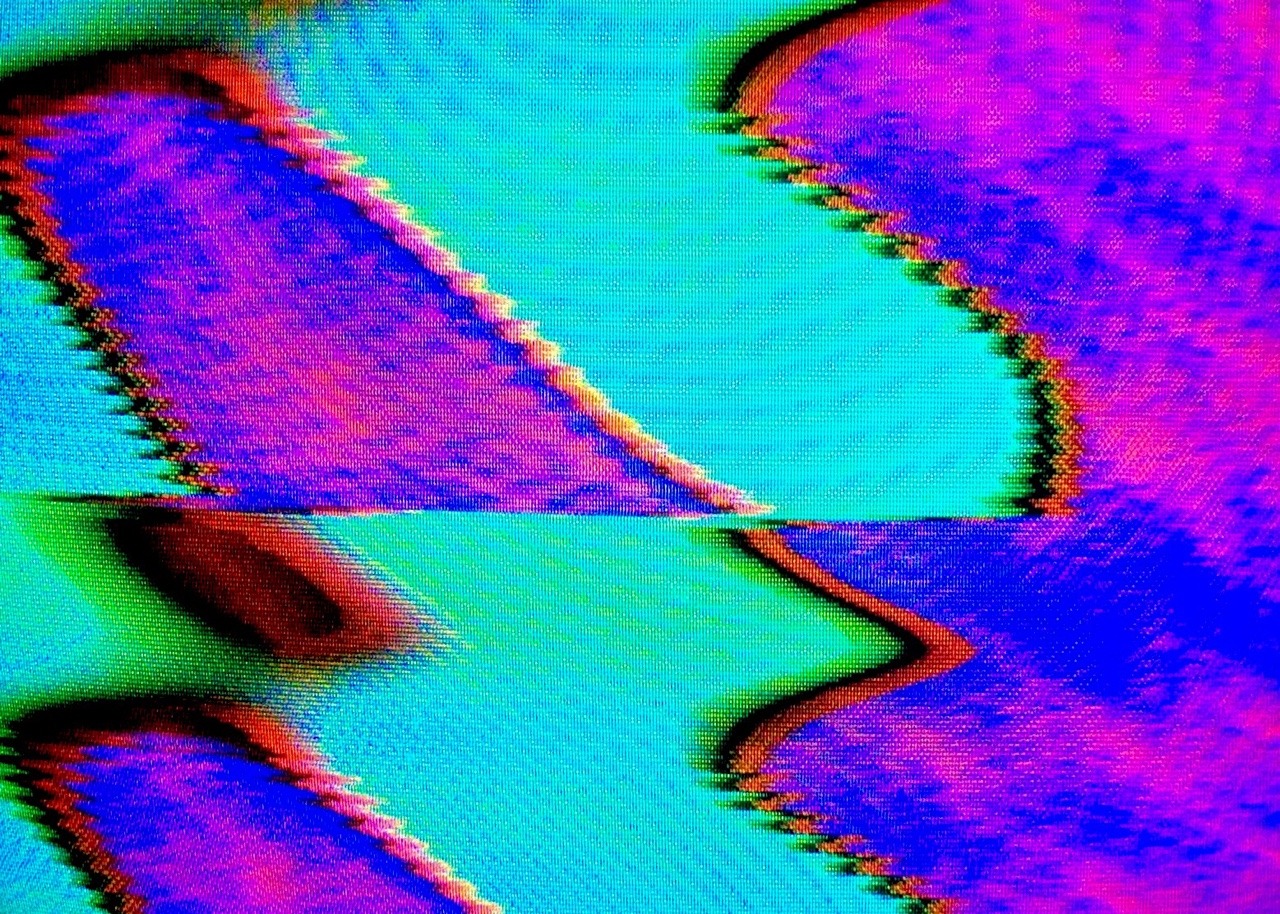These days AV artists are hiding out all over the place, this time curiosity didn’t kill the cat, as I stumbled upon the work of Cinema.AV on Instagram. it’s amazing where a hashtag can take you… #videosynth. I was keen to find out how someone so visually analog ends up that way, and how they manage in an ever expanding digital world (at the time of writing more so than ever).
1.Tell us about your first ever live gig? When was it and how did it go?
For years, I used to play a kind of ambient, soundscape style of music, and for live performance, I would put whatever found vhs tape behind me for visuals. Often without a screen. It often just turned into lighting for my performance, instead of clearcut visuals.
Fast-forward to a couple years later, in summer 2015, where I started buying jvc video mixers, archer and vidicraft boxes. It was here where I took it upon myself to do visuals for a show I had booked. Sadly, I didn’t realize, the projector couldn’t handle the distorted signals I was throwing at it. Luckily though, someone at the last moment, let me borrow theirs. It was total godsend. The result was this hyper-distorted cross between national geographic videotapes. It worked for the more abstract, psychedelia I had booked for the evening,
Later down the line, I found the need for time base correctors in live performance, and mixers equipped with such. To evenly blend, rather an abruptly with one of those RCA Y splitter cables turned on end. Which is actually the same as the classic Klomp dirty mixer. It was all stuff I got for free, or nearly no money. Never top of the line. Always the most difficult, least practical solutions. But the result was always unique to the moment, to the performance; endlessly fleeting.
2.We discovered your work on Instagram. How do you usually connect with the AV community online? Does social media play a big role for you?
Strangely, yeah. I hardly ever go out locally, unless of course I’m playing a show. So beyond that setting, you’ll never find me in the wild. Even before this quarantine action, I was a total homebody. Staying in whenever possible to work on art and infinitely explore the machines. So having access to social media platforms is actually key to the whole system. I can actively gauge what pieces people actually like, what ideas stick and in turn, get shared with a larger audience.
Its those posts that snowball into bigger and better gigs. As the recognition on a global scale is significantly more gratifying than just the local efforts I receive so often. In fact, for the better part of 2019, I was very busy with live video work. Having nearly no time off, I accepted this as a lifestyle, rather than just hobby. And in the social media zone, I’ve been able to publicly beta-test things like the Erogenous Tones Structure module, Phil Baljeu’s custom vector graphics system and as of late Andrei Jay’s latest raspberry pi video synth and feedback algorithms as hardware devices. The curiosity the results generated have in turn, sold modules and made the manufactures money to sustain their efforts.
…having access to social media platforms is actually key to the whole system. I can actively gauge what pieces people actually like, what ideas stick and in turn, get shared with a larger audience.
To be fair though, I’m not sure how much of this actually real. If it’s all made up, or the reactions are fabricated. It’s a fine silver-lining we’re all walking along. One day, a post could generate hundreds of interactions, while the next day, nothing. I think alot of that could actually be the option for folks to drift between realities, between the physical and the cyberspace. It’s in this cyberspace, that I do often connect with other artists, say for example my bud Konopka and has online video painting series. To watch him create something entirely from scratch, in real time, thousands of miles away is a true head-spin if you think about it. But not even 5 years ago would have been possible.
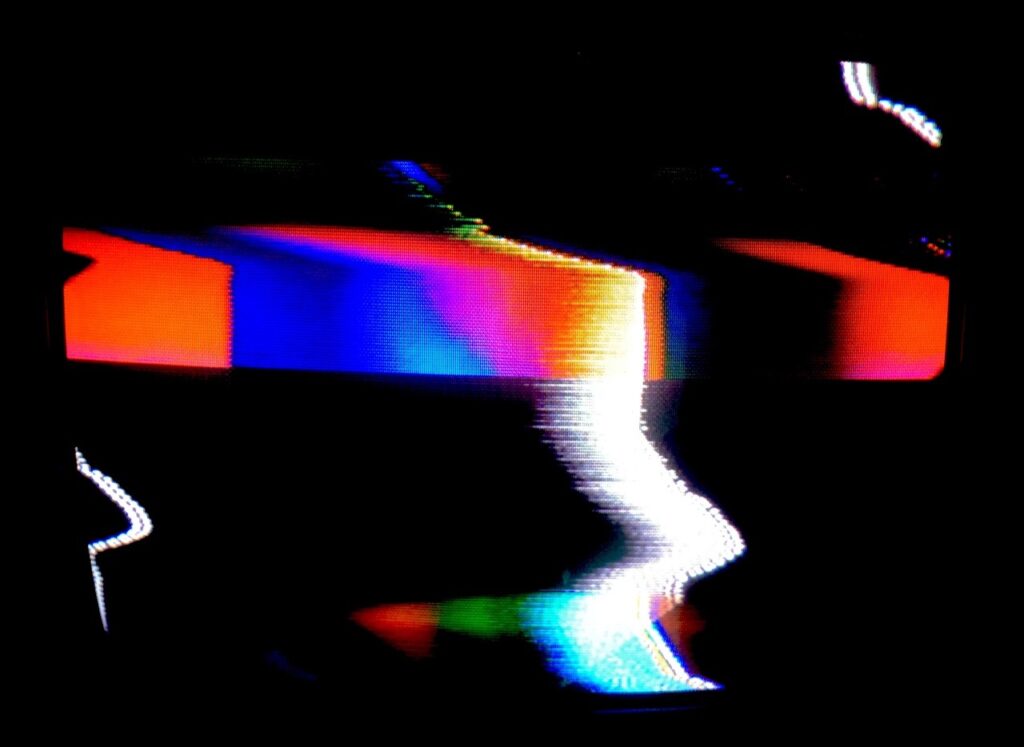
3. It’s fascinating to how analog and digital worlds inspire AV artists. What’s your take on the two and how do you find working with analog systems for live visuals?
Truly. When I first got started, it was all analog, all found devices. Though in time, I’ve found the whole LZX modular zone, which started analog and now has drifted into this wild digital hardware dimension that has opened up all kinds doors. The obvious attraction to the large analog modular is the physicality and pure intuitive nature of the whole thing. As in a live setting, there is nothing more fun and unpredictable than a hand-wired mess of cables and devices to create this ever-fleeting dialogue, never again to be replicated. For ambient, for house, for techno and literally everything in between, there’s this infinite body that just works, and often never crashes or fails.
If anything, it’s always the digital component that freezes or fails first. I’ve done shows with computer artists that for some reason or another, who just can’t make it work that particular night.
If anything, it’s always the digital component that freezes or fails first. I’ve done shows with computer artists that for some reason or another, who just can’t make it work that particular night. So just step in and end up taking over the evening with my system. However, I’ve had my fair share of venues tell me their systems are HDMI only. So learned to convert the analog composite outputs of the modular to the HDMI with aid of things like Ambery converters and scalers, Extron scalers, and even the silly Blackmagic shuttle, that has it’s own share of issues. It wasn’t until last summer that I realized the Roland V4-EX had a very effective means of conversion and scaling to HDMI, VGA, and back down again. The result was a total game-changer. So I sold my other mixers, and devices to scale up to HDMI and hadn’t looked back. This meant I could seamlessly work with digital projection systems and streaming processes. And from the get-go, it’s been used in every performance effort since. It’s even let me collaborate with both digital and analog artists alike. To fade and key between all manner of artists and ideas.
So little things like that make the whole system go, which leads me into the question…
4.What’s your basic setup when do performance live AV shows? (If you have one)
I am constantly pushing myself as an artist. So every year or so, I’ll experience this major creative shift around winter time, when my job at the photo lab temporarily shutters for winter break on campus. It is is then where I have about a month to chill and regroup my mind. This generally means some new gear enters the studio, and in turn the dirty warehouses they get thrown into for live work.
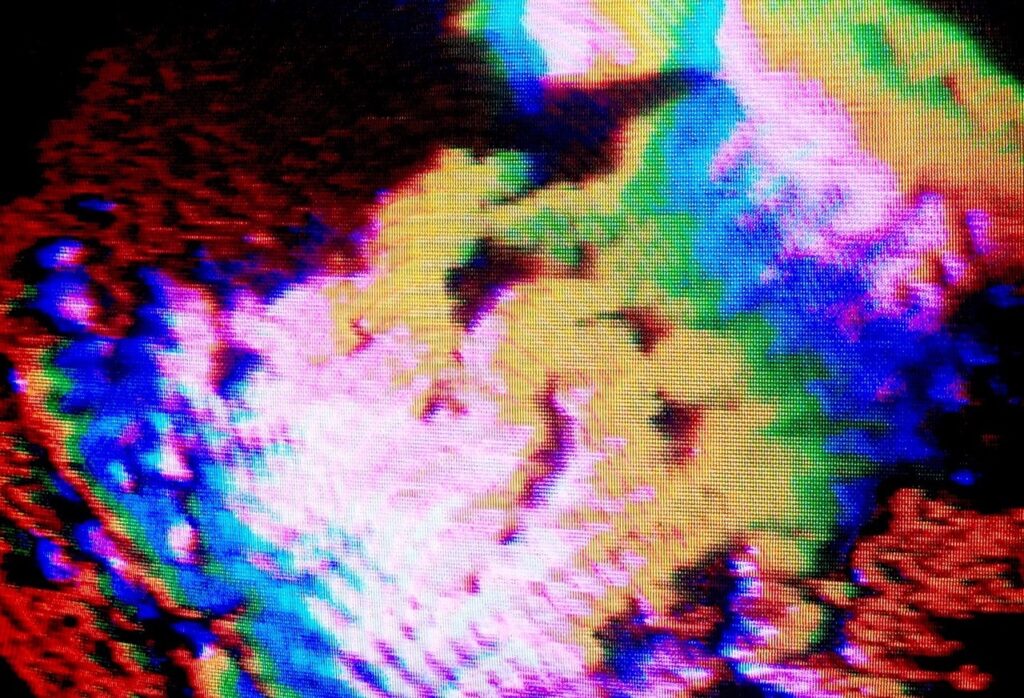
In 2019, I saw my modular system grow from a single 6U, two row case that could fly on any airline, to a larger 12U, four row system, that for the majority, made it’s way into every gig. In tandem with the V4-EX, the two were all I needed to do 8-10 hours of a rave whatever else I was getting booked for. However, the few time I flew out for one-offs, I brought it back down to 6U. Which was a lot of fun and lent itself to collaboration with other artists. It was in this time though, away from gigs and rather chill moments at the lab, where I began to experiment with the virtual dimension of VSynth, the Max/Msp visual extension. The result was very reminiscent of my larger modular system. Though at the time, my computer could only handle small patches. Anything big would see my computer begin to overheat and grind to a halt.
This got me looking at computers, seriously. As a video generation and manipulation tool, much in the same way the dedicated hardware was, but a larger, more sophisticated, and recallable level. It was months of research and a very generous donation within the family that lead me onto a gaming-oriented laptop, complete with a dedicated graphics card, that in it’s day was considered high-spec, and miles beyond my aging macbook. From the moment I lifted open the box and got it booted, I went straight into complex Max patches and dense 3D structures with the aid of Resolume Arena. When I realized I could save, and recall every motion, I started plotting how to gig with it. To layer to pieces together and to treat Resolume as a video sampler of my analog devices. What began to happen was a meshing of dimensions. No longer was one any better than the other. They were one of the same. It was with this entry that live performance physically became less stressful and far more manageable. No longer did have to carry this unwieldy modular system on a train or a bus. I could now discreetly carry the common laptop computer, just as everyone else.
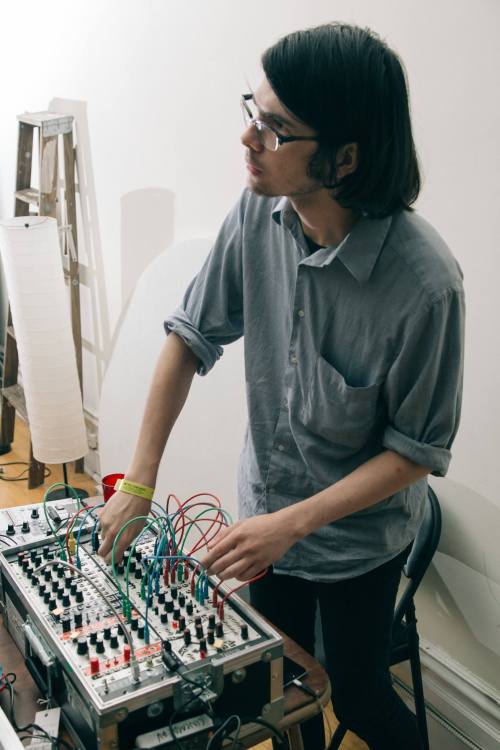
Setting up and breaking down, with the projector, is a two cable, two power supply motion. So quick and so light. With the aid of a midi controller, all the tactility remains, and nothing changes. The digital results do look incredible though. I cannot deny that. No matter what I have though, I make the best of all of it. For touring, in 2020, my setup is just that. I did some dates with Steve Hauschildt and Telefon Tel Aviv across Texas and the process was so smooth. Same for the brief efforts with LLORA and BATHHOUSE, just weeks ago. So much less to think about, all with the same manipulations and motions.
5. What would be your dream AV gig?
Currently speaking, the dream is still to tour, to travel and do large scale art installations with my video work. I had things lined up, but those have all fallen in favor of the current pandemic. But that’s honestly not going to hold anyone for long. These things will all still happen, just not soon as I had anticipated. I was truthfully hoping to break into the festival dimension; Mutek, Movement, Sonar, Aurora, as from a live scale, that feels like the next big move, amidst touring through the theaters and dedicated art spaces. I’ve had tastes of all those, but like anyone serious about their craft, I want to further and really make a name for myself, as truly, I don’t know what else to do.
Find out more about Cinema.AV on his artist page
